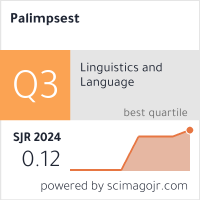AI-DRIVEN COMMUNICATION: THE ROLE OF ARTIFICIAL INTELLIGENCE IN SHAPING CONSUMERISM AND SOCIAL CONTROL IN BRAVE NEW WORLD AND NINETEEN EIGHTY-FOUR
DOI:
https://doi.org/10.46763/PALIM251019103dAbstract
This paper examines the dystopian visions of Aldous Huxley in Brave New World and George Orwell in Nineteen Eighty-Four, focusing on the role of artificial intelligence (AI) within the communication systems of these novels. Both Huxley and Orwell, writing in the early to mid-20th century, predicted the influence of media technologies on shaping modern consumer culture. Huxley’s depiction of AI-driven advertisements and Orwell’s portrayal of AI-powered surveillance highlight the potential dangers of mass media in manipulating thought and behaviour. Through these technologies, both novels present a world where communication systems foster a seemingly utopian, consumer-driven reality. This paper argues that AI and media technologies are not passive tools but active forces that manipulate populations and sustain capitalist ideologies: (1) Technology as Social Control: Advancements in AI and media technologies are used as tools for social control, pacifying populations and limiting critical thought; (2) Media and AI Reinforcing Commodification: These technologies create a consumer-driven society that reinforces capitalist dominance by commodifying human attention and interactions; (3) Digital Inequality and Social Stratification: The rise of digital communication technologies deepens social inequalities, dividing society into the “connected” and “disconnected”.
Keywords: Artificial Intelligence (AI); Media technologies; Surveillance; AI-powered communication; Media influence.


